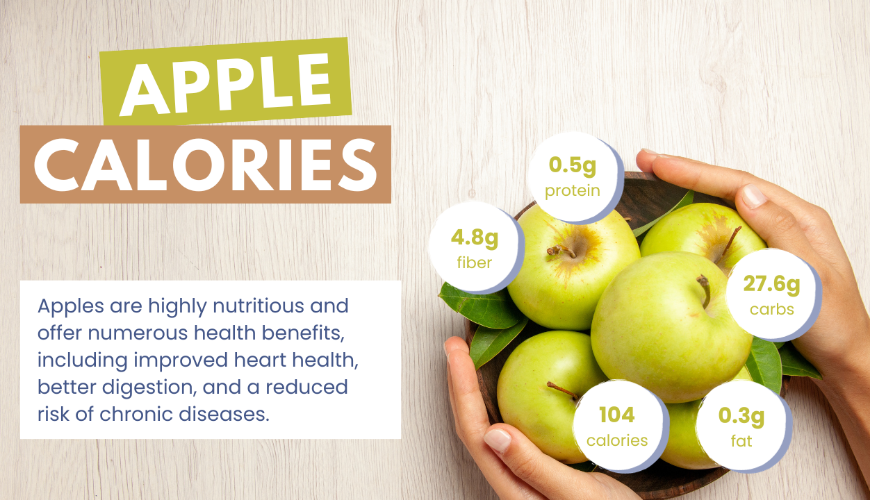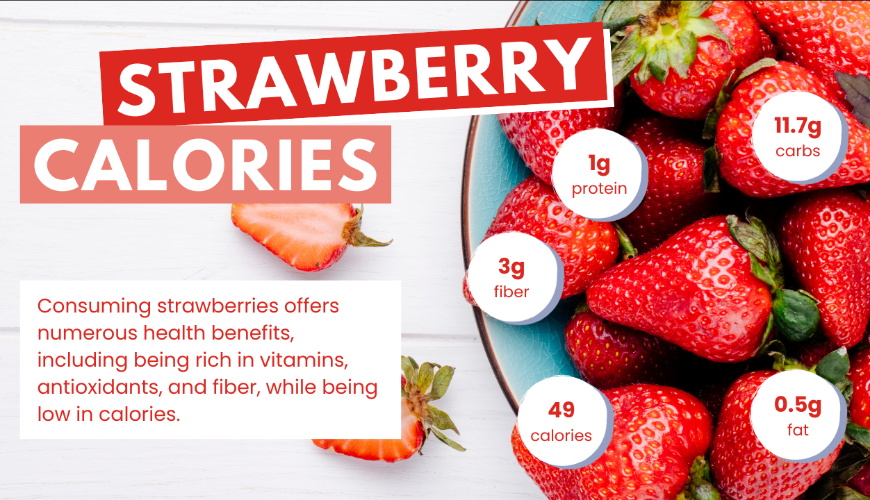The gratification of biting into a crisp, succulent apple is a tactile sensation enjoyed by individuals from the past to now. Apples exist in numerous varieties and represent one of the most favored fruits globally. Although apples might not appear as exciting or exotic compared to other fruits, their dietary worth cannot be undermined.
The gratification of biting into a crisp, succulent apple is a tangible sensation relished by people from antiquity till today. With countless variations available, apples rank among some of the most cherished fruits worldwide. Many might undermine them due to their lack of exotic appeal; however, the health benefits they provide should not be overlooked.
Nutritional Content of Apples
A medium-sized apple that weighs about 200 g gives you 104 calories, proteins amounting to 0.5 grams, carbohydrates around 27.6 grams, and fats merely at 0.3 grams level. It has traces of fiber, potassium, and Vitamin C as well. This data is drawn from the USDA’s findings. There isn’t much difference in nutritional values across different types such as red or green apples – be it on calorific value or nutrients like fibers.
- Calories: 104
- Fat: 0.3g
- Sodium: 2mg
- Carbohydrates: 27.6g
- Fiber: 4.8g
- Sugars: 20.8g
- Protein: 0.5g
- Potassium: 214mg
- Vitamin C: 9.2mg
- Vitamin A: 6mg
Starches
On average, an apple of medium size contains roughly 27.6 grams of carbs, inclusive of 4.8 grams of fiber and just under 21 grams of may contain fructose or fruit sugar. Apples typically have a glycemic index situated between about 34-38.
When looking at the nutritional variations for apples that have been peeled, there will be a notable downturn in their fiber content. Based on data from USDA, an apple devoid of its skin only furnishes about one and a half grams of fiber, compared to almost five times as much when consumed with its skin intact.
Fats
For a medium-sized apple, the fat content is under half a gram.
Proteins
Pears have a minimal protein content. A medium-sized pear only contains half a gram of protein.
Nutrients and Trace Elements
Apples are acknowledged for being a beneficial provider of potassium and beta-carotene. They contribute moderately in terms of vitamin C, folate, magnesium as well as calcium.
Calories
In its raw form, an apple of medium size contains 104 calories. A small-sized apple (165g) has around 165 calories while a large one (242g) carries about 126 calories. When served in slices amounting to one cup, apples contribute roughly 65 calories.
Overview
Apples exhibit considerable variation in their sizes. Nevertheless, they are typically low-calorie foods rich in nutrients. They offer dietary fiber along with micronutrients like potassium and vitamin C.
Wellness Advantages
Consuming whole fruits, such as apples, can contribute positively to any meal plan. This includes vegan or vegetarian diets, a diet devoid of gluten, and well-known protocols like the Whole30 regimen. Apples offer an easy-to-consume combination of nutrients – they deliver fiber content, vitamins, and minerals, plus flavonoids (health-promoting plant compounds). These provide a multitude of important wellness enhancements.
Top Five Perks of Consuming Apples
- Ensures cardiac fitness owing to an abundance of potassium and reduced sodium levels
- Helps control blood glucose courtesy of its rich fiber content
- Offers defense against cancer due to antioxidants such as quercetin
- Could potentially alleviate symptoms affiliated with asthma thanks to quercetin
- Contributes towards maintaining a healthy weight by delivering satisfying fiber and essential nutrients
Supports Cardiovascular Well-being
Fruits and veggies are essential elements of a cardioprotective diet. These plant-derived foods inherently contain low sodium levels and an abundance of potassium, which aid in keeping blood pressure in check to avoid deadly hikes. Whole apples, for instance, happen to be rich in fiber which is recognized for its cholesterol-reducing effects. Moreover, apples offer a plethora of compounds that combat inflammation contributing significantly towards minimizing the cumulative threat posed by cardiovascular diseases.
Balances Blood Glucose Levels
The apples’ dietary fiber regulates digestion, hindering a swift spike in glucose levels post-consumption. It’s suggested to aim for 14 grams of fiber per every 1,000 calorie intake. Thus, a diet plan of approximately 2,000 calories, should comprise at least 28 grams of fiber to maintain utmost health.
Having whole apples with their peel engenders the maximum amount of fiber (note that apple juice does not contain any fiber). A medium-sized apple has about 4.8 grams of dietary fiber; thus consuming one or two can aid you towards achieving your everyday target.
May Contribute to Cancer Prevention
Apples are abundant in a potent natural antioxidant known as quercetin. This antioxidant has the unique ability to destroy abnormal cells, while not affecting healthy cells. It interferes with different stages of cell development, triggering apoptosis (the process of programmed cell death) in various kinds of tumors.
There’s promising evidence that consuming quercetin can be beneficial against prostate cancer, breast cancer, and lung cancer. A diet high in fruits and vegetables will supply you with quercetin and other powerful antioxidants that could help prevent cancer.
Could Decrease Indications of Asthma
The Quercetin existing in apples demonstrates to be advantageous for asthma sufferers. Research indicates that quercetin assists in suppressing inflammation, thus diminishing the acute nature of food hypersensitivities and respiratory ailments effectively. Incorporating apples into a holistic approach to managing asthma could aid in maintaining symptoms under control.
Could Aid in Shedding Pounds
Apples are a wholesome and satiating snack that may help diminish longings and regulate hunger. Multiple research works have demonstrated an enhancement in weight loss results with apple consumption.
Opting for a crisp apple instead of prepackaged nibbles is an excellent method to augment your vitamin ingestion and experience the satiety delivered by soluble fiber. Given their high water composition, apples allow you to have generous servings without exceeding calorie limits.
Apples and Sugar Content
Some individuals aim to reduce sugar consumption when they’re concentrating on losing weight. Yes, apples do have sugar, approximately 20 grams for each apple. However, it’s important to note that this is a natural sugar that is gradually released owing to the high fiber content in apples that moderates digestion. Consumption of whole fruits such as apples actually correlates with weight loss and a decreased probability of developing type-2 diabetes.
Allergies
Experiencing allergic reactions due to apple consumption is definitely plausible. Such allergies may manifest as a slight tingling sensation in your mouth and lips upon tasting an apple or you might observe more pronounced symptoms soon after ingesting them.
One potential root of such allergy-related signs linked to apples could be Oral Allergy Syndrome (OAS), otherwise termed Pollen Fruit Syndrome (PFS). This contrasts with standard food-based allergies.
Through experiencing either situation, the likely implications can incorporate sensations of itchiness and swelling across the oral cavity, facial region, lip, tongue, and throat almost instantaneously post-consumption of apples or even after a gap of up to one hour. More worrying responses could involve challenges with breathing or swallowing.
In case you encounter any such indications after eating apples, it is advisable that immediate medical help should be sought while consulting with healthcare professionals about arranging for an allergy test.
Potential Side Effects
Despite the known beneficial effects of raw apples on asthma, dry ones might contain sulfites that exacerbate asthma symptoms in those sensitive to them. If your diet does not usually include a high volume of fiber, a sudden increment in consumption could lead to digestive unease.
To prevent such problems, gradually transition into dietary alterations. In addition, people with irritable bowel syndrome (IBS) who experience sensitivity towards specific fruit sugars might consider apples as a problem food. Apples possess a high concentration of these sugars, termed FODMAPs, which might provoke difficulties for certain individuals. Consultation with a certified dietitian can help devise an efficient strategy for symptom management.
Apples grown using conventional methods often utilize pesticides; notwithstanding their safety levels being under government control. Quite frequently apples find themselves listed among the ‘dirty dozen’ by the Environmental Working Group. To minimize potential risks of ingestion of nitrosamines and possibly unsafe pesticide residues, it’s advisable to opt for organic apple products including fresh apple juice and ready-made applesauce.
Varieties
There are approximately 7,500 different types of apples around the world. However, only about 100 of them are cultivated for commercial purposes in the United States. They vary widely in aspects such as color (ranging from red to pink and green to golden), taste (transcending sweet to tart), and texture (which could be grainy or subtle, or hard). The size of an apple can be as small as a large cherry or even as big as a grapefruit.
Apple-derived products also come in various forms like apple puree, apple juice, fermented apple drink, vinegar made from fermented apples, and desiccated slices of this fruit. When choosing any sort of processed items derived from apples, it’s better to choose things that have undergone little processing without sugar enhancement.
Optimal Times
Apples can be found throughout the entire year these days, thanks to contemporary preservation methods, but fall is when they are at their absolute best. There isn’t a single one among the 50 U.S. states where apples aren’t produced, so you’re likely able to locate an apple orchard nearby for freshly picked ones. The flavor of an apple fresh from the tree is incomparable indeed. Regardless of type, ensure that your apples feel hard if squeezed and have no punctures, blemishes, or mushy areas.
Preservation and Hygiene of Food
Keep apples at ambient temperature for a duration of 1 to 2 weeks or located in the fridge for a period from one up to two months. If frozen, they can remain good for as long as eight months. Refrain from cleaning them until you are set to use them but ensure they are thoroughly washed under clean running water to get rid of any residue of pesticides or wax. To inhibit apple slices from turning brown, dab them lightly with lemon juice; this act serves as an oxidation deterrent.
Ways to Incorporate Apples into Your Meals
Dice the apples and mix them with oatmeal seasoned with cinnamon, or spread them over whole-grain pancakes served alongside yogurt. Introduce some apple chunks in your daily salad or incorporate them as key ingredients in your relishes. The sweet essence of apples balances well against proteins like roast chicken, turkey, or pork. They also can be paired up with cheese or nut butter for a quick snack.
Apples potently enhance various baked goods such as loaves of bread and desserts too! Create innovative dishes ranging from an apple crumble to an alluring apple pie or lip-smacking apple strudel at home. Interestingly, you could use applesauce not only for its tantalizing taste but also as a healthy alternative for cooking fats while baking, enhancing both the moisture content and fluffiness of your recipes.





